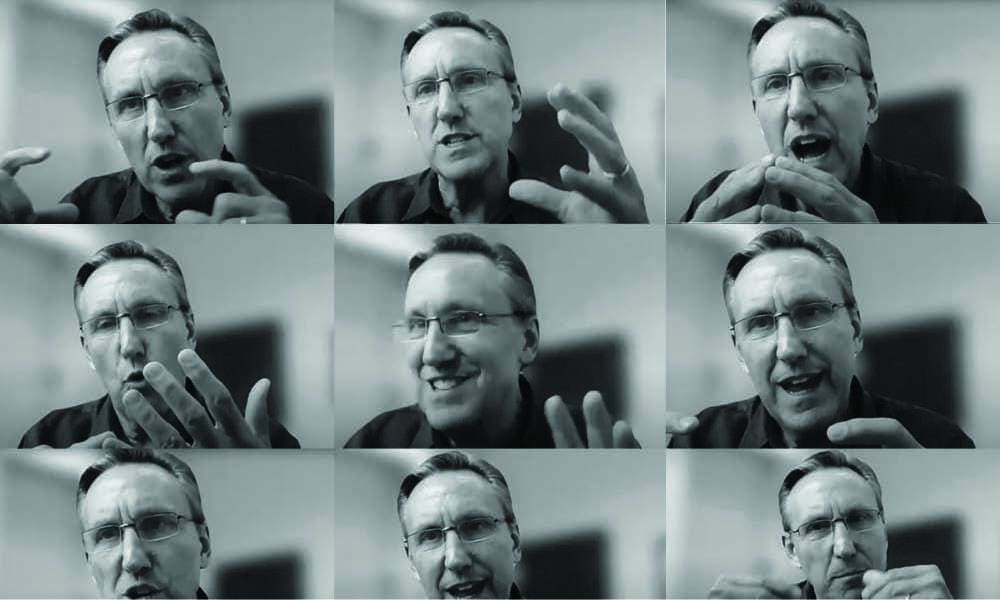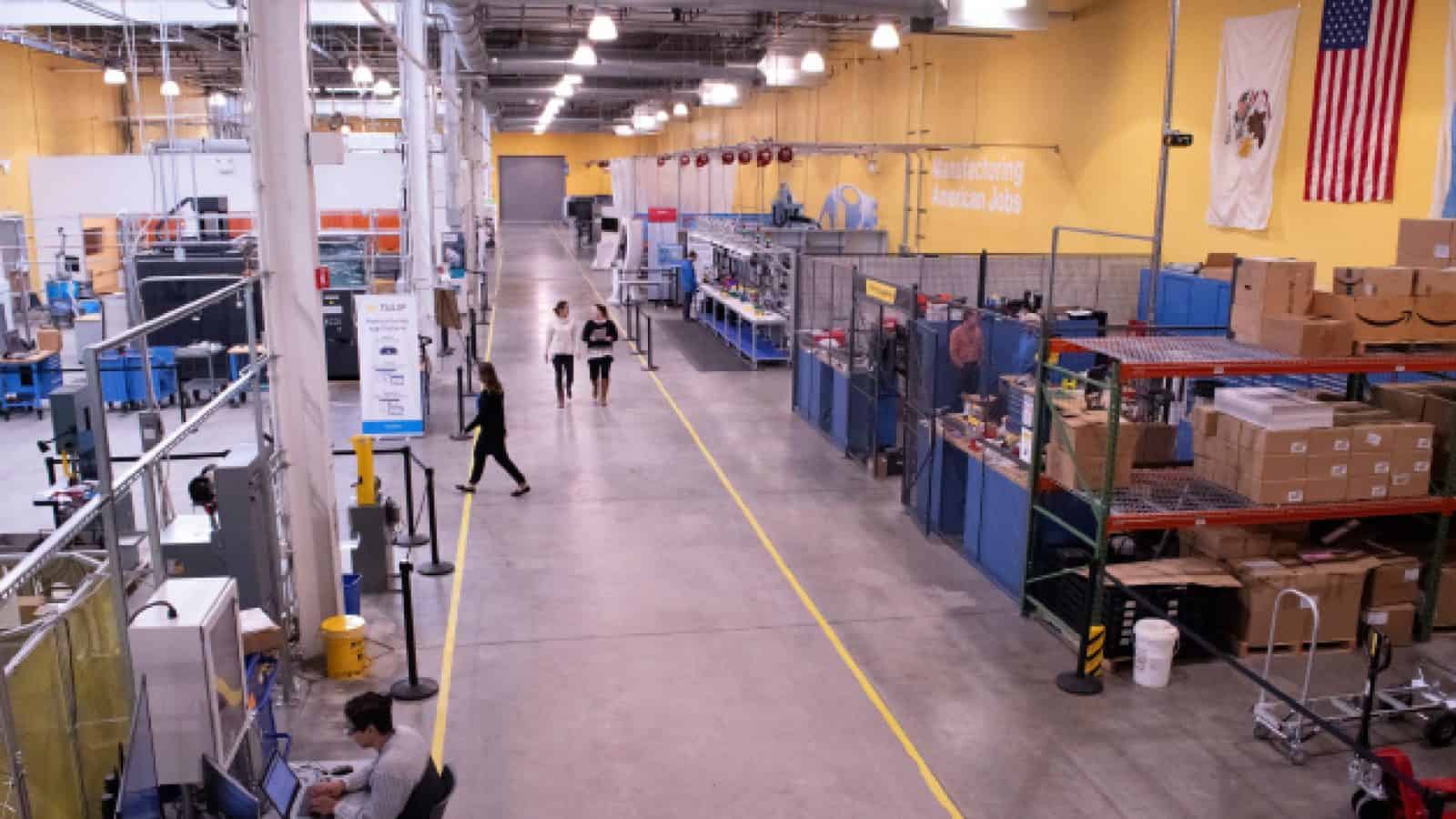Dialogue: Change is the Only Constant

Cooley Group President and CEO, Dan Dwight – our 2024 Manufacturing Leader of the Year – explores digital transformation, cultural change and what’s next.
Jeff Puma: Hello everybody and welcome to our third edition of the Manufacturing Leadership Journal Executive Dialogue series. We’re excited today to be joined by Dan Dwight, Cooley Group president and CEO, and this is an exciting time to have Dan with us. For those who were at the Manufacturing Leadership Awards this year you know that Cooley Group was a finalist in three categories: AI and Machine Learning, Operational Excellence, and Transformative Business Cultures. And, on top of that, they won the Small and Medium Enterprise Manufacturer of the Year, the Manufacturing in 2030 Award, and individually Dan was awarded Manufacturing Leader of the Year.
Dan, welcome and congrats on all that recognition and all the great work you’re doing at Cooley Group.
Dan Dwight: Great, thank you. I appreciate it and appreciate the recognition by my fellow manufacturing peers in the industry. So thank you.
JP: Let’s jump into some questions here. In your time leading Cooley Group, you have overseen a sweeping and large-scale digital transformation of the company’s operations. Given your experience what do you think are the essential qualities that manufacturing leaders need to have in the digital era?
DD: In my view a successful, large-scale digital transformation requires not only an operational transformation, but also cultural and leadership transformations. Successful leadership in the digital era demands, among other things, a higher level of transparency across the organization. This transparency enables a higher level of employee engagement in the transformational processes. Your team needs to see the road map in front of them because successful and sweeping transformations are extremely time consuming with a lot of jagged edges that the leadership team needs to address. Cooley is a decade into our transformation, and we have the battle scars to show for it, but in the process our digital leadership team has created a high, high level of team member transparency and engagement that is driving constant change.

“Missteps today could leave companies adrift amid the AI sea change and unable to navigate new market realities.”
JP: So you’re a decade in and you alluded to some of that change that’s happening. Beyond strategizing and deploying an update to your technologies, you’ve also made many strategic business culture changes. What are the key cultural elements that can enable a successful digital transform?
DD: Cooley’s digital transformation actually began with a cultural transformation built around becoming more agile and adaptable. Every decision we make places long-term resiliency and cross functional collaboration as our operational North Star. As a consequence of prioritizing collaboration, Cooley decentralized our decision-making structures, eliminating hierarchal instruction and empowering team members to communicate transparently and more frequently. Everyone at Cooley, in every role across all our facilities, deserves credit for making us more resilient. Our organizational resilience allows us to separate whatever macroeconomic, pandemic, supply chain shortage and market turmoil the world throws at us from our long-term global market and financial successes.
JP: Cooley is a small/medium enterprise so you have a great understanding of digital transformation and how it applies to an organization that isn’t as huge as some of those other big dogs out there. There are some challenges that go with that. Do you think small and medium enterprises risk getting left behind in the digital era and what needs to happen to help them succeed?
DD: I always take some exception to this line of questioning in that I believe businesses often make a false assumption about getting left behind because of their size. For over a decade I’ve been leading a middle market manufacturing company that’s nearing its 100th anniversary. Our longevity is built on using our size to actually our advantage. We are more resilient, more agile, more adaptable than our competitors who are often a multiple our size because we constantly invest in pro-growth strategies regardless of the economic environment. Our investments in innovation generate consistent new product revenue of over 20%, and our investments in Manufacturing M4.0 digitization generate consistent, robust productivity dividends.
JP: Can you give a 30,000-foot overview of how Cooley progressed through its digital journey?

“Instead of using predetermined rules, gen AI identifies data patterns to create new, unique content.”
DD: A decade ago Cooley was a 90-year-old polymer coater textile company on the verge of bankruptcy. The team threw rocks at our storage silos to measure inventory levels. Some of our legacy equipment dated back to 1965. We began a much needed cultural and digital transformation.
Fast forward to 2024, we transformed into a highly collaborative, data-driven enterprise. And by 2025 we are on plan to have all our extruders in all our factories be self-correcting through AI and machine learning.
I am tremendously proud of what we have accomplished. Our team learned to accept that change is the only constant and that a long-term digital growth strategy creates greater and lasting shareholder value. Collaboratively we have built and continued to build a company worth celebrating.
JP: Is there anything that surprised you on that journey?
DD: We experienced multiple surprises during our journey but first and foremost how engaged our employees, particularly our factory teammates are in the transformation, and I’ll credit Cooley’s leadership team including factory leadership for getting their teammates engaged early and often throughout the transformation – giving every employee a voice and an ownership role in our transformation.
Second, I was surprised how personally and professionally rewarding the journey would be across the organization. Everyone at Cooley, in every role across all our facilities, recognizes that he or she has a critical role in making our company more resilient.
And, last but not least, I was surprised by how beneficial it is for MLC members to share their best practices. Members’ willingness to open their factories to plant tours, to share use cases through webinars and Manufacturing Leadership Journal articles, to network open and honestly with transparency provided Cooley with an invaluable knowledge network. Through all this sharing Cooley learned how to turn around our organization, better and even faster than we thought possible. And I’ll admit we plagiarized numerous MLC member best practices, but it turned out to be essential in Cooley’s evolution from being a Manufacturing 2.0 company to a fully data-driven M4.0 enterprise.
JP: At the Manufacturing Leadership Awards you were recognized for the projects you’ve done, the incredible work that you’ve been doing at Cooley Group, both you personally as well as the entire organization. What’s next? What’s the next frontier for Cooley Group’s Manufacturing 4.0 transformation?
DD: Cooley’s M4.0 journey, up until this past year, was highly focused on the digital transformation within our factories, driven by making our internal operations more resilient. In 2024, we began to extend our transformation externally, applying the same change management processes honed during Cooley’s decade-long M4.0 transformation. Our business architecture and change management team leaders are working within their respective teams across the organization to build into our processes a more outward looking focus. For example, our M4.0 implementation leader has added supply chain resiliency to her leadership responsibilities. Her team seeks to build out Cooley’s end-to-end business resilience.

“Despite some early forays into gen AI, manufacturers are still primarily laying the groundwork in this area.”
This externally focused transformation is bringing the added challenge of having to coordinate our key suppliers, our factories and our key customers into a single uninterrupted value chain and I’ll just conclude by saying digital era leadership needs to recognize that a successful M4.0 transformation is perpetual. Change is the only constant.
JP: So true. Dan is there anything I didn’t ask you that you wanted to share about what you guys are doing?
DD: I’ll continue to send the thank you to the MLC members for sharing their best practices and use cases. It has really been a key component to our successful M4.0 journey to date.
JP: Well congratulations to you. Congratulations to your entire organization. It’s been wonderful to be able to pick your brain and hear a little bit about your journey and what’s next and where you came from. Thank you so much for sharing with our members and sharing in this Executive Dialogue.
DD: Appreciate it. M
Portions of this interview have been edited for clarity.
About the Interviewer:

Jeff Puma is Content Director for the NAM’s Manufacturing Leadership Council
